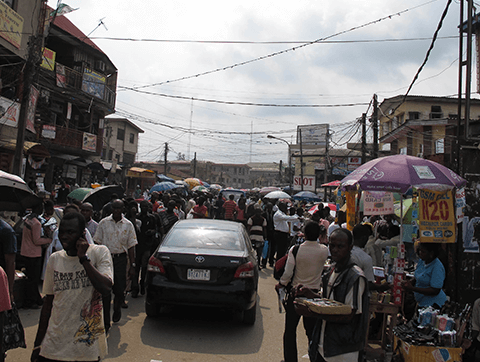San Francisco’s Board of Supervisors took a big step in April when it recommended by unanimous vote that the city divest nearly $600 million in fossil-fuel holdings from its $16-billion pension fund.
As the biggest municipality in North America to take such action, San Francisco is nudging other major cities on the continent to reconsider their own fossil-fuel investments.
It’s the kind of leadership many have come to expect from the “City by the Bay,” and according to Corporate Knights’ inaugural North American Sustainable Cities Scorecard, is indicative of San Francisco’s sustainability performance.
Of the 20 largest cities in the United States and Canada, San Francisco came out tops when measured against 27 key performance indicators across five categories: environmental quality, economic security, governance and empowerment, infrastructure and energy, and social well-being.
Corporate Knights has been ranking large cities in Canada for several years, but this is our first effort to also assess major U.S. cities. Roughly half of the indicators used in our last Canadian cities ranking have been carried over to our new scorecard. These represent a core of traditional measures that include air pollution, household spending on shelter, population density and education.
But several new and unique indicators were added this time around, and our sources of data were broadened. We also slightly shifted our focus away from goal- or vision-oriented indicators toward measuring recent infrastructure and socio-technological change.
For example, new metrics that assess urban vehicle congestion, “walkability” and cycling infrastructure – including the availability of bike-sharing services – were incorporated as a measure of quality of life as well as economic and environmental performance.
Taken together, San Francisco led the pack, followed by Washington, Ottawa, Vancouver and Toronto. The bottom five included Houston, Atlanta, Phoenix, Los Angeles and – ranked lowest – Detroit. (Cities in Mexico were excluded because of poor data availability.)
Ranking cities is a notoriously difficult task, as there are many limitations to contend with. Not all cities collect the same data, and where data does exist it is often out of date or not publicly available. Attempting to fill gaps, Corporate Knights sent surveys to all 20 cities and the response rate was only 50 per cent. To encourage disclosure, we awarded bonus points in our ranking to cities that made a best effort to complete our survey.
Another big problem is the different ways data are collected and represented. For example, there is not yet a standard way for cities to collect data on greenhouse gas emissions, which initiatives such as the Hestia Project at Arizona State University are trying to address using new technologies and methodologies. It’s an issue the World Bank has run into when trying to collect consistent, reliable data on the world’s largest urban areas.
“That lack of standardized and consistent data on city performance is one of the biggest barriers to creating sustainable cities,” said Daniel Hoornweg, a municipal engineer who has advised the World Bank on urban issues for two decades. Hoornweg said getting the data right is crucial. “Just like how doctors are quickly and reliably able to monitor a patient’s health through blood pressure, temperature, cholesterol and EKG, and then compare results over time and across peers, city managers need reliable and consistent urban metrics,” he said.
The World Bank and others are putting their hopes in the Global City Indicators Facility (GCIF) at the University of Toronto. GCIF is finalizing an ISO-standard methodology for collection of city data, but progress has been slow.
Many large cities and urban areas have yet to become contributing members of GCIF, and many existing members are still not prepared to have their indicators publicly released. Cities generally don’t like being scrutinized and ranked. “Several years may elapse before information is regularly published,” according to a World Bank city data report released in 2012.
But even when data is publicly available and standardized, direct comparability among cities can still be a challenge. Is it fair, for example, to compare the per-capita energy use of cities in northern climates with use in southern climates? New research out of the University of Michigan, published in March in the journal Environmental Research Letters, found that energy demand in Minneapolis, Minnesota, is 3.5 times higher than energy demand in Miami, but not necessarily because citizens and businesses in Minneapolis are wasteful of energy. The explanation is simple: “To the surprise of many, air conditioners are more energy efficient than furnaces or boilers,” according to the study. To fairly compare cities on certain metrics, methods will need to be developed that take these geographic and climatic differences into account.
It should also be emphasized again that this ranking is not based on vision or established goals. Like legendary sports broadcaster Howard Cosell, we’re just telling it like it is. Los Angeles may have committed to being a coal-free jurisdiction by 2025, but that laudable goal – and others that have come out recently from the City of Angels – doesn’t reflect the reality on the ground. What matters in our cities scorecard is when city aspiration translates into measurable sustainability performance.
We recognize sustainability is a term most people have difficulty defining, much less measuring, but we expect most would agree that it demands a minimum standard of living; a safe, diverse social network; societal institutions that support what could be termed “the good life,” for both existing and future generations; and an environment that promotes good physical and mental health.
Our scorecard does not and cannot capture every aspect of sustainability. But combining the results of the 27 indicators we have selected offers a strong sense of how our big cities perform relative to one another.
It goes without saying that, as city disclosure improves, standards emerge and data gathering becomes more frequent, the picture painted by the Sustainable Cities Scorecard will become clearer and the number of cities we track will grow.
Click here to go back to the ranking landing page.






